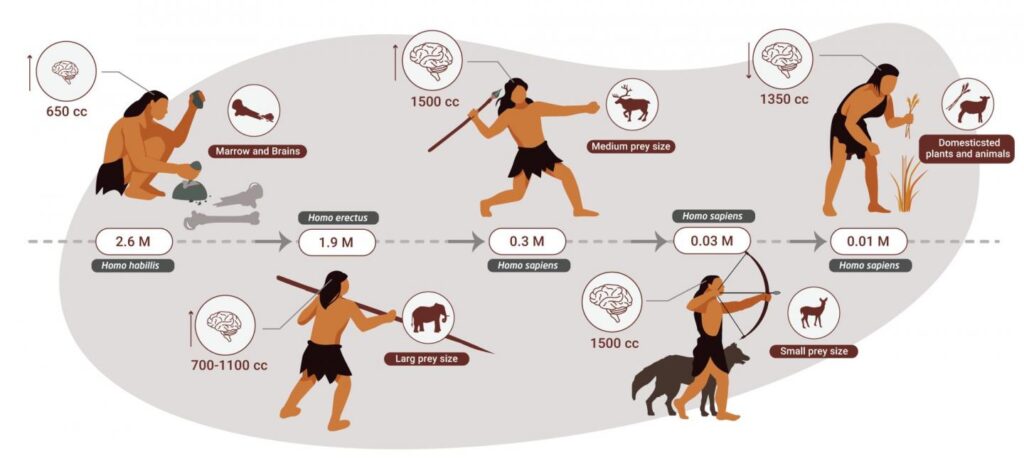
New research has shed light on the surprising dietary habits of our ancestors. For millions of years, humans were apex predators, primarily consuming meat. This revelation challenges the common perception that early humans were primarily omnivores, diversifying their diets with plants.
Hypercarnivorous Humans

The study, published in the American Journal of Physical Anthropology, examined the trophic level of ancient humans during the Pleistocene epoch. By analyzing various sources of evidence, researchers concluded that multiple species of the Homo lineage engaged in “hypercarnivory” for approximately 2 million years.
Challenging Previous Assumptions
Previous studies often relied on comparisons with modern hunter-gatherer societies to infer the dietary habits of ancient humans. However, these comparisons can be problematic due to the significant changes in the biological landscape and human preferences over time.

The Role of Megafauna
The extinction of megafauna, such as mammoths and other large animals, played a crucial role in shifting human diets. As these resources became less abundant, populations that incorporated more plants into their diets had a higher chance of survival.
Genetic and Morphological Evidence

The study examined genetic evidence, finding that human genome expression of genes related to plant digestion did not become widespread until late in the Pleistocene. Additionally, morphological adaptations in ancient hominids, such as Homo erectus, suggest a focus on hunting and consuming meat.
The Transition to Omnivory
While humans were primarily carnivorous for millions of years, the shift to a more omnivorous diet occurred towards the end of the Pleistocene. This transition was likely driven by the scarcity of animal resources and the need to adapt to changing environmental conditions.

The Impact on Agriculture
The researchers argue that the late shift to a more omnivorous diet played a significant role in the development of agriculture. As humans began to rely more on plants, they developed new tools and techniques for processing them.

The study’s findings challenge the traditional understanding of ancient human diets. For millions of years, humans were apex predators, primarily consuming meat. It was not until the late Pleistocene that humans began to diversify their diets and eventually develop agriculture. This new research provides valuable insights into the evolution of human dietary habits and our place in the food chain.

Leave a Reply